39 3 laws of robotics
Isaac Asimov's Laws of Robotics Are Wrong - Brookings Isaac Asimov's Laws of Robotics Are Wrong. When people talk about robots and ethics, they always seem to bring up Isaac Asimov's "Three Laws of Robotics.". But there are three major ... Three Laws of Robotics | concept by Asimov | Britannica Other articles where Three Laws of Robotics is discussed: science fiction: Alien encounters: Asimov's famous Three Laws of Robotics are as follows: "(1) a robot may not injure a human being or, through inaction, allow a human being to come to harm; (2) a robot must obey the orders given it by human beings except where such orders would conflict…
3 Laws of Robotics - Robotics - Tank Top | TeePublic 3 Laws of Robotics Tank Top. Robotics Tank Top. Designed and Sold by Superhero_Suite Asimov's famous three laws of robotics in actual programming code. Color: White. Style: Size: S M L XL 2XL. Fit: Male Fit Female Fit. View Size Chart $13 $20. Add To Cart Save 35% for the next: Days Hours Mins Secs Don't love it? We'll fix it. ...
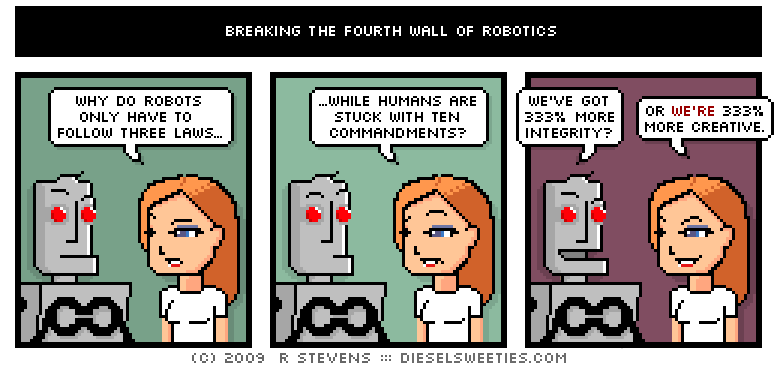
3 laws of robotics
Three laws of robotics and surgery - PubMed His First Law states: "A robot may not injure a human being, or, through inaction, allow a human being to come to harm. " This philosophy would directly conflict with the application in surgery. In fact, most of his robotic stories deal with robots that come into conflicts with the laws. What are Asimov's Three Laws Of Robotics? - Definition ... Asimov's Three Laws are as follows: A robot may not injure a human being or allow a human to come to harm. A robot must obey orders, unless they conflict with law number one. A robot must protect its own existence, as long as those actions do not conflict with either the first or second law. Where did the Three Laws of Robotics come from ... The best known set of laws are Isaac Asimov's "Three Laws of Robotics". These were introduced in his 1942 short story "Runaround", although they were foreshadowed in a few earlier stories. The Three Laws are: A robot may not injure a human being or, through inaction, allow a human being to come to harm.
3 laws of robotics. The Three Laws of Robotics Have Failed the Robots | Mind ... Prolific science and science fiction writer Isaac Asimov (1920-1992) developed the Three Laws of Robotics, in the hope of guarding against potentially dangerous artificial intelligence. They first appeared in his 1942 short story Runaround:. A robot may not injure a human being or, through inaction, allow a human being to come to harm. The 3 Laws of Robotics | I, Robot Wiki | Fandom The 3 laws of robotics were 3 commands to the code of Droids that were first originated by Isaac Asimov & appeared in the Movie I Robot ! The 3 laws are: A robot may not injure a human being or, through inaction, allow a human being to come to harm. 3 Laws Robotics - Engineered Autonomy Solutions The principals of 3-Laws Robotics are scientists and engineers with extensive experience in the operations, systems and software/firmware of autonomous systems. They are recognized experts at the forefront of research and engineering developments in these areas. Several also have clearances to work on sensitive projects. What Are Asimov's Three Laws Of Robotics? - Programming ... What Are The Three 3 Laws That Govern Robots? Issac Asimov proposed the Three Laws of Robotics in order to alleviate this problem. These laws state: 1) A robot cannot harm a human being, or, if it does not act, allow a human being to do so. In order for a robot to be protected, it must not conflict with the First or Second Laws.
PDF Asimov's Three Laws of Robotics supplemented for 21st ... Asimov's Three Laws of Robotics sought to provide a framework for the relationship between humankind and robots, then mainly creatures of science fiction. Now that robots are widely used in PDF Three Laws of Robotics' and Machine Metaethics Three Laws immoral. (4) Even if the machines that are actually developed fall short of being like Andrew and should probably not be considered to have moral standing/rights, it is still problematic for humans to program them to follow the Three Laws of Robotics. From (3) and (4), we can conclude that (5) whatever the status What Are the 3 Laws of Robotics? And Do We Adhere to Them ... One such author was Isaac Asimov, who, in his works, defined the Three Laws of Robotics. To him and to the audience of his time, all of that was science-fiction. Considering the stories taking ... Isaac Asimov and the Three Laws of Robotics - SciHi ... The Three Laws of Robotics 1.A robot may not injure a human being or, through inaction, allow a human being to come to harm. 2. A robot must obey the orders given to it by human beings, except where such orders would conflict with the First Law. 3.
The 3 Laws that Stop Robots From Taking Over The World Isaac Asimov's 3 laws of robotics are as follows: A robot may not injure a human being or, by failing to act, allow a human being to come to harm. A robot must obey orders given to it by human beings, except where carrying out those orders would break the First Law. Three Laws of Robotics - Wikipedia The Three Laws, quoted from the "Handbook of Robotics, 56th Edition, 2058 A.D.", are: First Law A robot may not injure a human being or, through inaction, allow a human being to come to harm. Second Law A robot must obey the orders given it by human beings except where such orders would conflict with the First Law. Third Law en.wikipedia.org › wiki › Mark_TildenMark Tilden - Wikipedia Mark W. Tilden is a robotics physicist who produces complex robotic movements from simple analog logic circuits, often with discrete electronic components, and usually without a microprocessor. He is controversial because of his libertarian Tilden's Laws of Robotics , [1] and is known for his invention of BEAM robotics and the WowWee Robosapien ... Explanation of the 3 Laws of Robotics - Futurite Asimov's 3 laws state that: "A robot may not injure a human being or, through inaction, allow a human being to come to harm." "A robot must obey the orders given it by human beings except where such orders would conflict with the First Law."
What are Issac Asimov''s three laws of robotics? Are they ... The three laws of robotics are suggestions for how robots should operate, ideally. They are: 1. A robot must never harm a human, or through inaction allow a human to come to harm. 2. A robot must...
After 75 years, Isaac Asimov's Three Laws of Robotics need ... The Three Laws Asimov's suggested laws were devised to protect humans from interactions with robots. They are: A robot may not injure a human being or, through inaction, allow a human being to come...
loopholes in the three laws of robotics Re: loopholes in the three laws of robotics. I find the 3 laws of robotics to be completely wrong. A robot may not injure a human being or, through inaction, allow a human being to come to harm. A robot must obey orders given it by human beings except where such orders would conflict with the First Law.
Asimov's Laws of Robotics: Everything You Need To Know Jan 4, 2021 — Asimov's Laws of Robotics: An Exact Definition · 1. A robot may not injure a human being or, through inaction, allow a human being to come to ...When did Asimov create the three laws of robotics?What are Asimov’s Laws of Robotics?
Three Laws of Robotics | Asimov | Fandom The Three Laws of Robotics, also called the Three Fundamental Rules of Robotics, or the Four Laws of Robotics after the addition of the Zeroth Law, are fundamental laws that are inculcated into the positronic brains of all robots in Isaac Asimov 's Robot series and more generally in his Foundation Universe.
Three Laws of Robotics - Prometheus Blog Recent Posts. Robot rights, practical autonomy and character-driven comedy: An appreciation of Mark Stanley's webcomic Freefall, the 2017 Special Prometheus Awardwinner
Three Laws of Robotics - Halopedia, the Halo wiki The Three Laws of Robotics are conditions to which artificial intelligences are subject to: A robot may not injure a human being or, through inaction, allow a human being to come to harm. A robot must obey any orders given to it by human beings, except where such orders would conflict with the First Law.
3 Laws of Robotics | Board Game | BoardGameGeek 3 Laws of Robotics is a lively deduction game for 4-8 players in which you know everyone's information except your own! Each round, you ask a single question to try to figure out who is on your side, being sure to obey the laws as they're added. Ask the right questions, find your team, and boot up victorious in 3 Laws of Robotics!
The Mystical Three Laws of Robotics - Automated Curiosity The Three Laws of Robotics are a pretty interesting topic to read about in books, see in movies and hear on the news. But, that's all it is. It's just a fancy way that did help out a lot back in the day when people were still extremely skeptical regarding the uses of robotics and whether it would help or just cause problems.
Isaac Asimov's "Three Laws of Robotics" - Auburn University Isaac Asimov's "Three Laws of Robotics" Isaac Asimov's "Three Laws of Robotics" A robot may not injure a human being or, through inaction, allow a human being to come to harm. A robot must obey orders given it by human beings except where such orders would conflict with the First Law.
Three Laws of Robotics ( Complete Details) - Thordrc Three Laws of Robot ics Asimov's gives rules to safeguard people against robotic interactions. They are: A robot cannot hurt a person or enable a person to harm via inactivity. A robot must obey human beings' guidance unless such commands contradict the first law.
Laws of robotics - Wikipedia The Three Laws are: A robot may not injure a human being or, through inaction, allow a human being to come to harm. A robot must obey the orders given it by human beings except where such orders would conflict with the First Law. A robot must protect its own existence as long as such protection does not conflict with the First or Second Laws.
› publication › 273697873(PDF) Introduction to Robotics - ResearchGate Robotics can ease peoples life, in the industrial and home environment. When talking about homes, robot may assist people in some domestic and tasks, done in repeat.
Where did the Three Laws of Robotics come from ... The best known set of laws are Isaac Asimov's "Three Laws of Robotics". These were introduced in his 1942 short story "Runaround", although they were foreshadowed in a few earlier stories. The Three Laws are: A robot may not injure a human being or, through inaction, allow a human being to come to harm.
What are Asimov's Three Laws Of Robotics? - Definition ... Asimov's Three Laws are as follows: A robot may not injure a human being or allow a human to come to harm. A robot must obey orders, unless they conflict with law number one. A robot must protect its own existence, as long as those actions do not conflict with either the first or second law.
Three laws of robotics and surgery - PubMed His First Law states: "A robot may not injure a human being, or, through inaction, allow a human being to come to harm. " This philosophy would directly conflict with the application in surgery. In fact, most of his robotic stories deal with robots that come into conflicts with the laws.

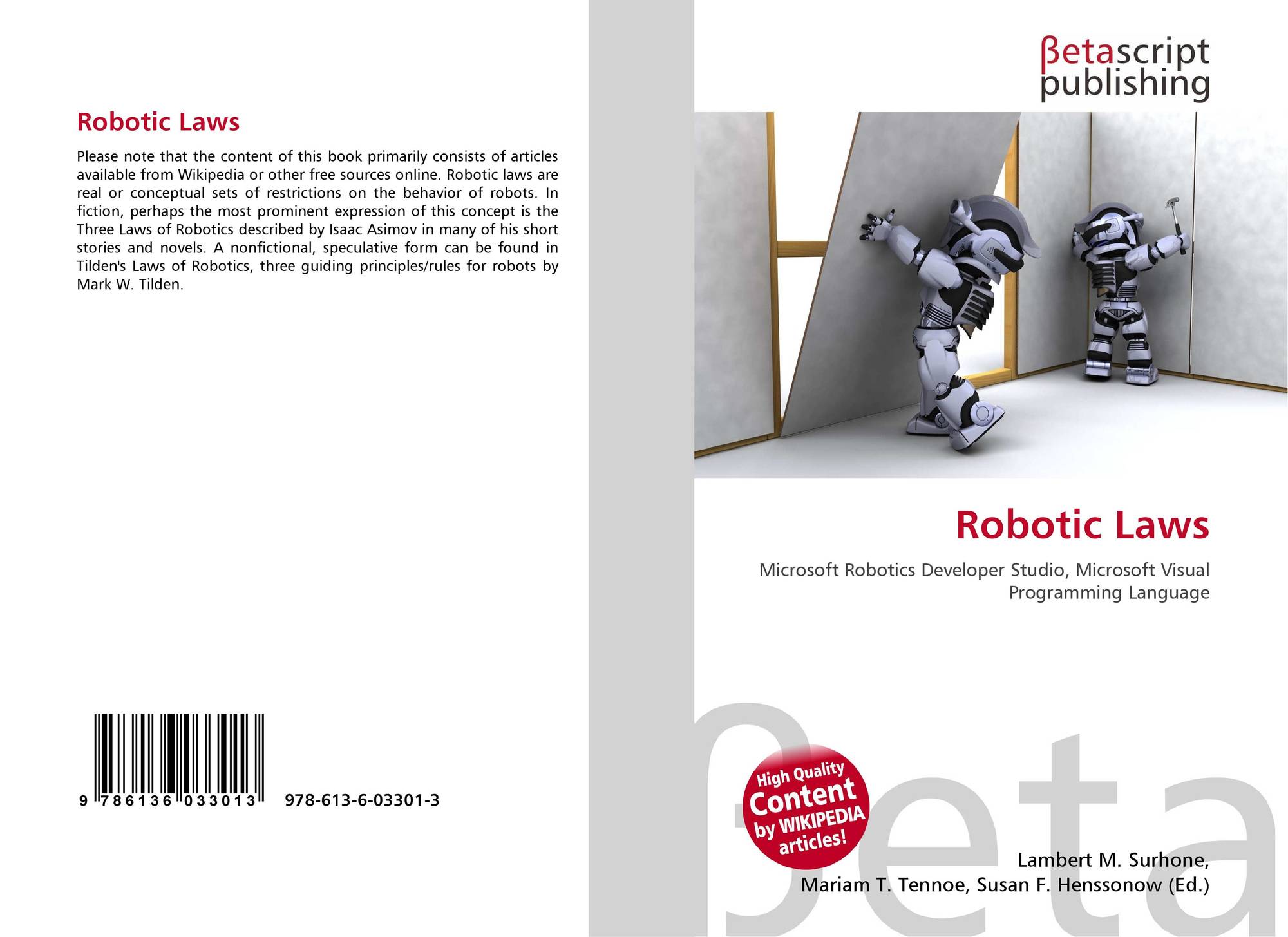


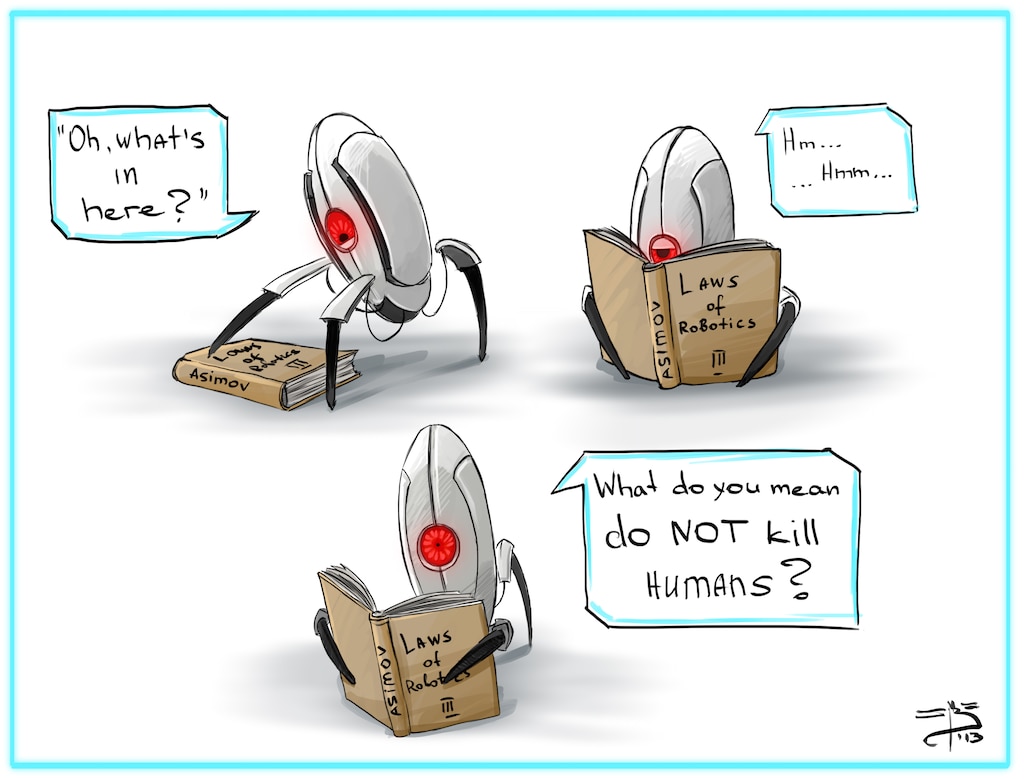




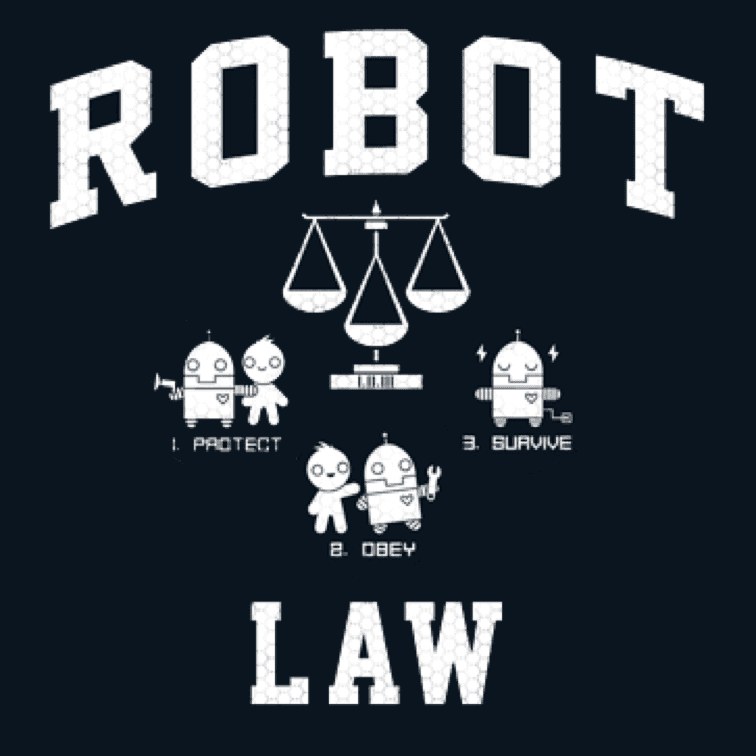

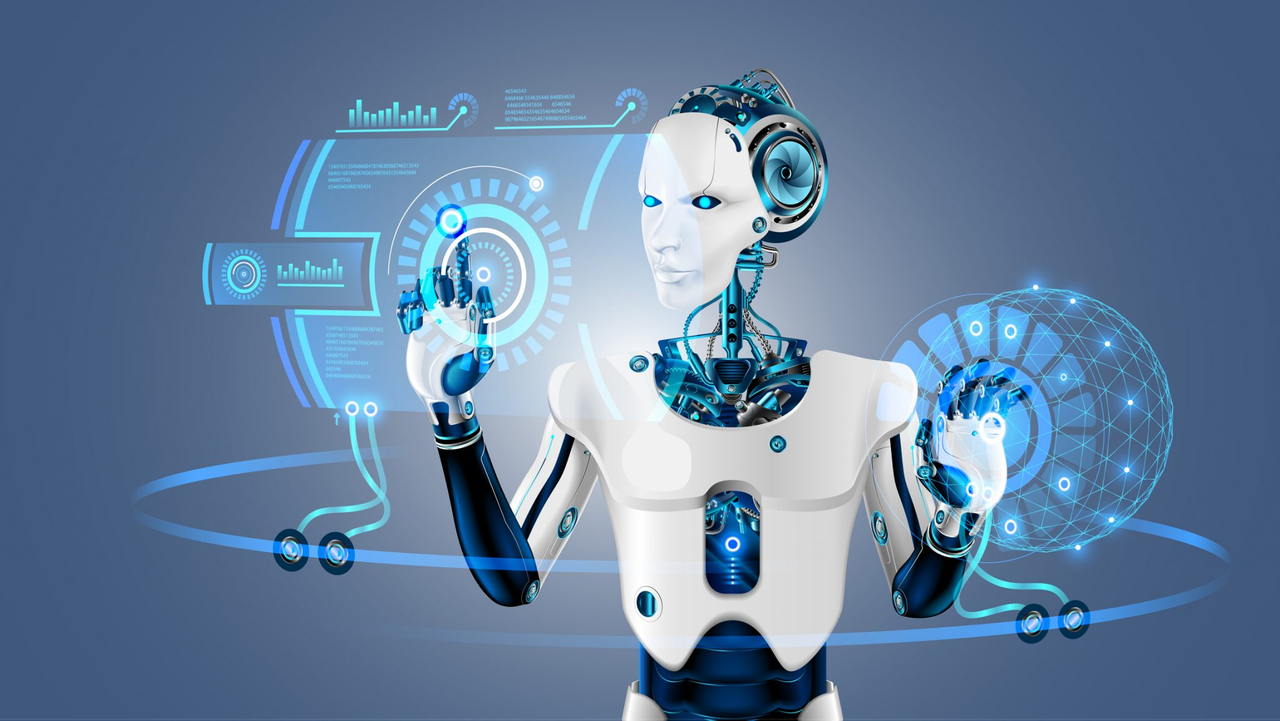
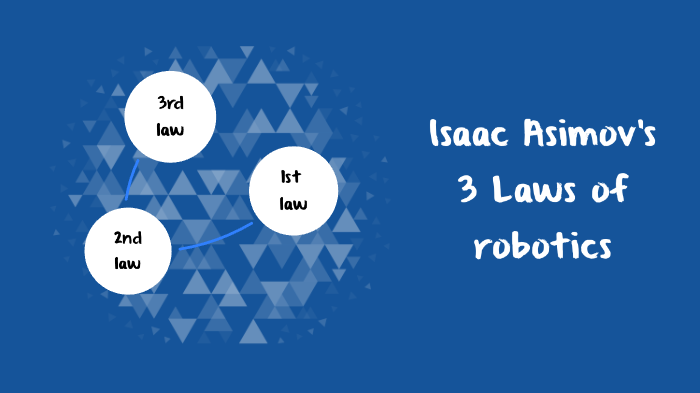
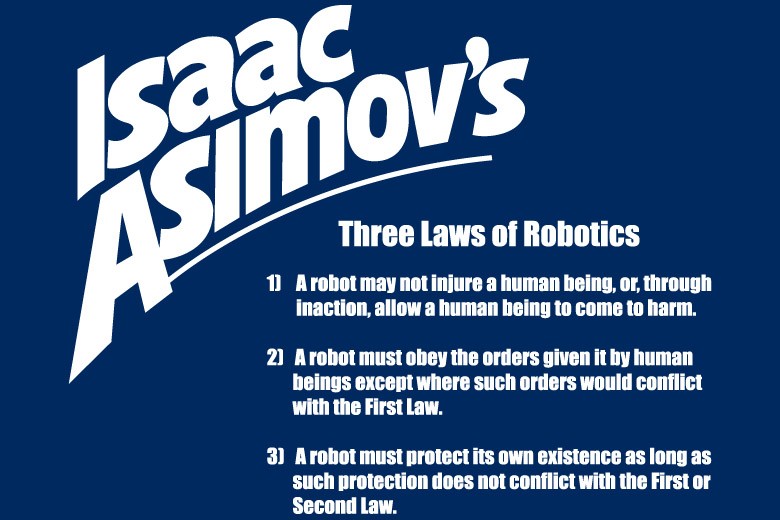

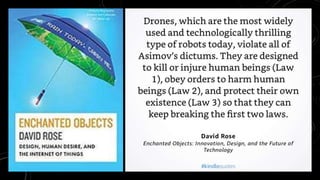

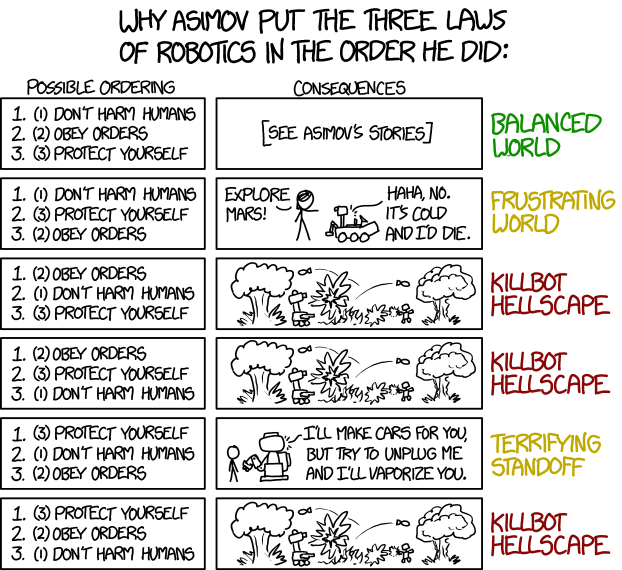








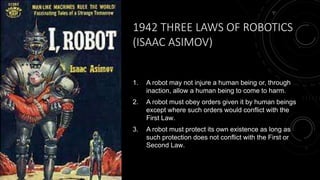




0 Response to "39 3 laws of robotics"
Post a Comment